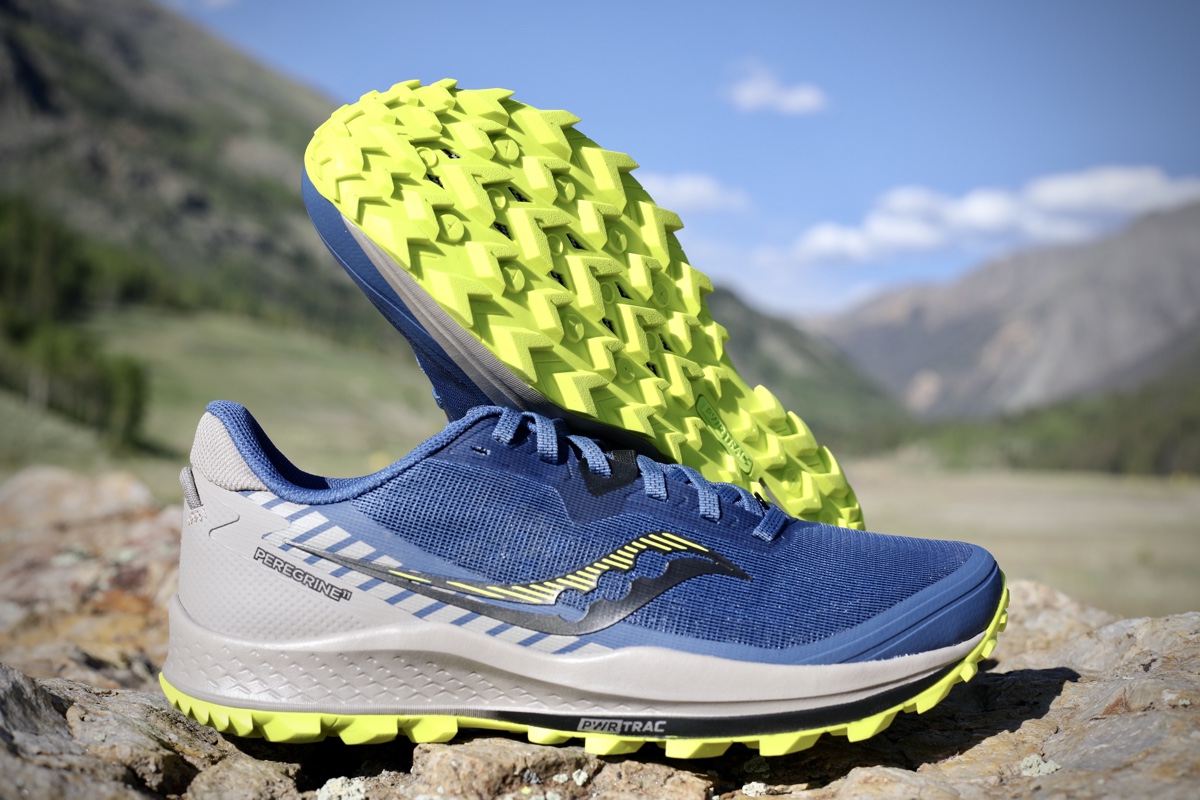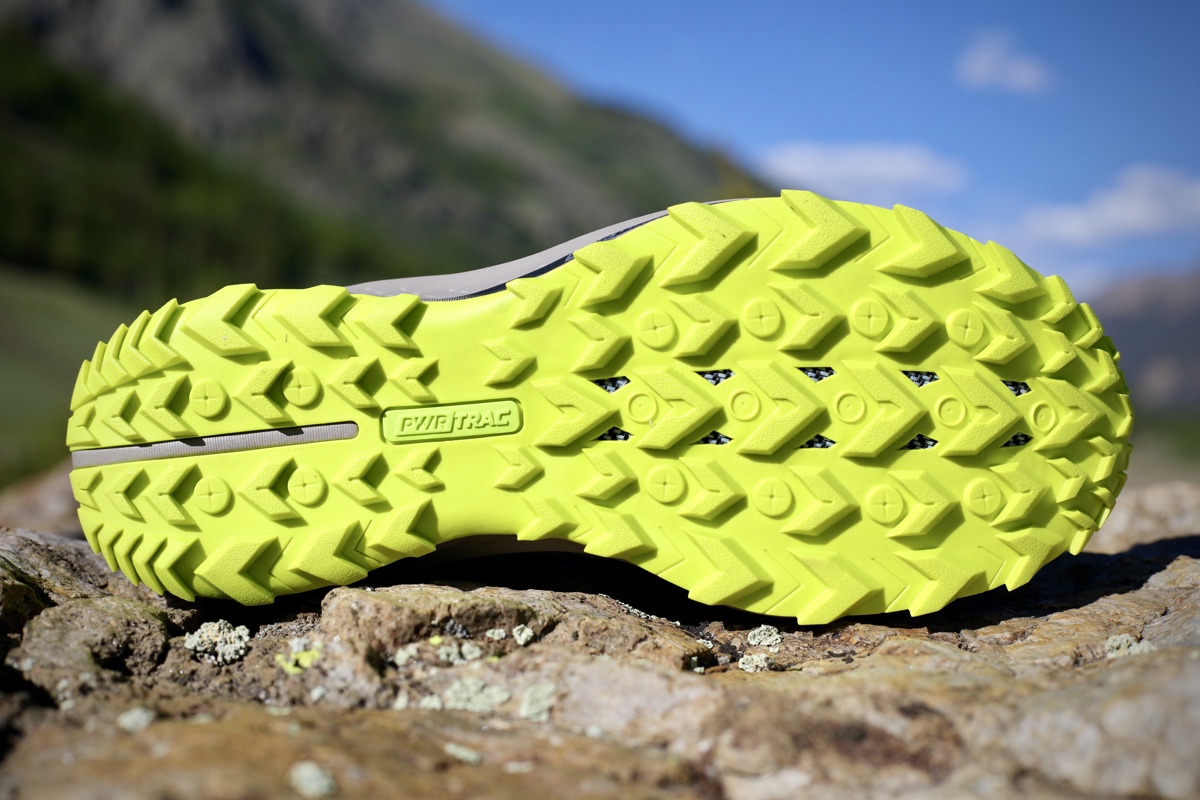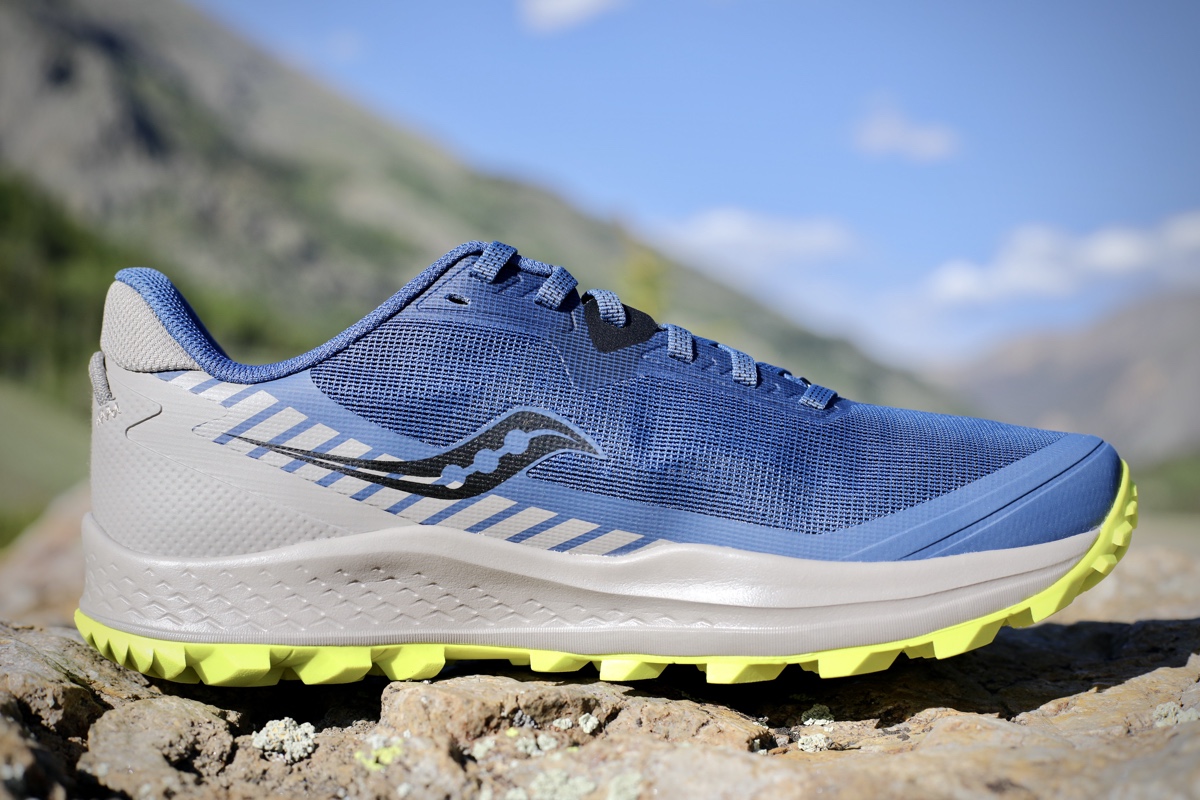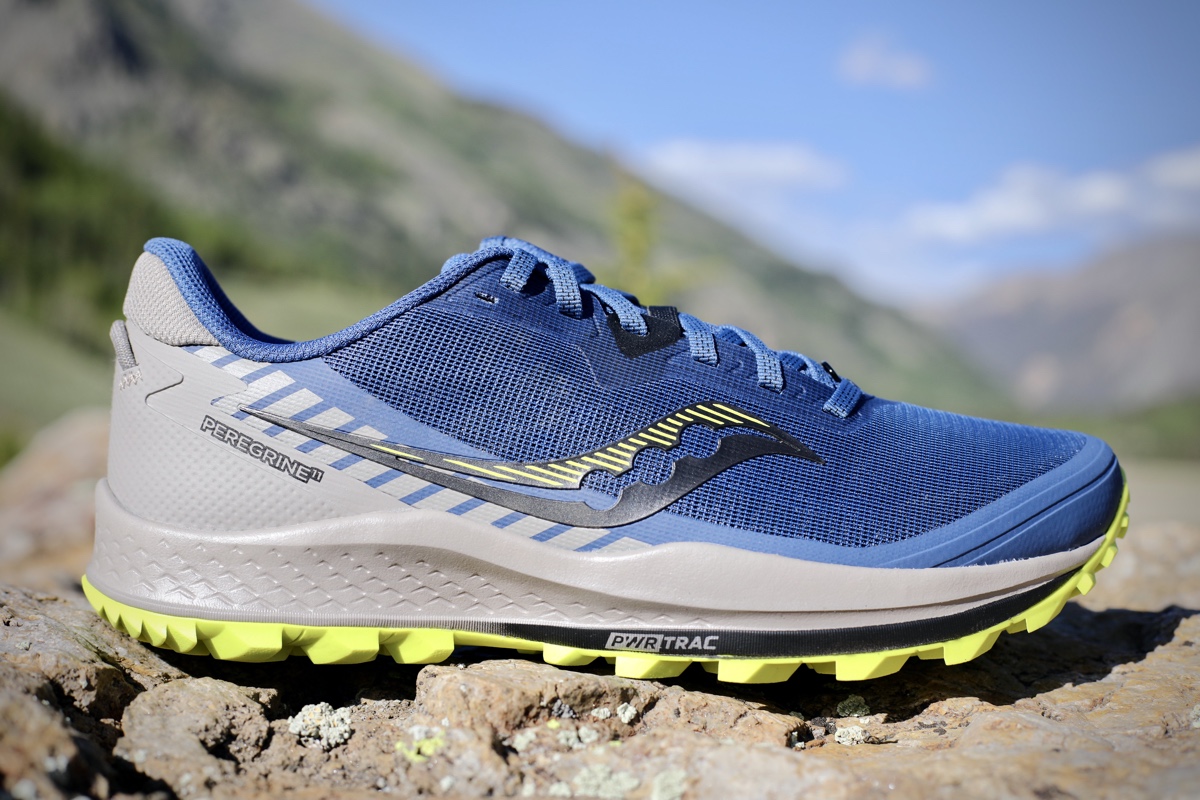For the latest on the Saucony Peregrine, check out our Saucony Peregrine 15 review.
Our Favorite Trail Running Shoes
Check out our Best Trail Running Shoes article to learn about our current favorite trail running shoes!
Saucony Peregrine 11 Review
The Saucony Peregrine 11 ($120) is the latest edition of the company’s classic Peregrine model. In this video review, we look closely at this go-to trail running shoe that works well in a lot of different terrain conditions as well as when running both fast and far.
We’ve named the Saucony Peregrine 11 one of the best trail running shoes!
Shop the Men's Saucony Peregrine 11Shop the Women's Saucony Peregrine 11
Saucony Peregrine 11 Review Transcript
Hey, welcome to Trail Trials, the video-review section of iRunFar, my name is Travis Liles and in this video we look at the Saucony Peregrine 11 ($120) trail running shoe. Let’s kick off by talking about the specifications here. The Saucony Peregrine 11 in a men’s size 9 comes in at just at 10 ounces. We have a 4-millimeter drop from heel to toe, 27mm at the heel and 23mm at the toe. This shoe is pretty luggy, is moderately cushioned, and has good upper. This is just like a classic trail shoe. Let’s talk about it.
Saucony Peregrine 11 Outsole
Let’s start at the outsole of the Saucony Peregrine 11. As you can see from this side view, it has substantial lugs. They’re not overly crazy lugs like a football cleat or something, but they are angled and toothy, and there are quite a few of them. This shoe excels on soft ground, it excels on wet mud and places where you need grip. The rubber compound is PWRTRAC, and it’s a really good middle tackiness, middle longevity type of rubber compound.
In some older versions of the Peregrine, I felt like the lugs were maybe built too much for longevity, which meant they were slicker and made of harder types of rubber. This is a softer rubber. You’ll see that I can move these lugs around, and it does really nice across a lot of different surfaces, without being overly aggressive and while still being aggressive enough to tackle soft stuff.
From a lug standpoint, you can see lots of lugs in a cleat design, though again, medium-ish profile on that cleat. There are forward-facing lugs, rear-facing lugs, and a full rubber outsole so that there aren’t any openings where you’re going to be getting stuff poked into it and foam is going to come off. This is something you see in the industry quite a bit now. These small holes on the outsole just show off the rock plate. What’s underneath here is a fabric plate, versus being plastic. It’s like nylon thread tightly woven together to provide that rock plate. So what you get is a fairly flexible shoe. It’s not as flexible as the Peregrine 9, which you could fold in half, but it has a rock plate. I think even on the ruggedest of terrain, this is a shoe that you can count on that’s not going to overly fatigue your foot, but it’s also not a tank-like shoe, so it’s not going to provide total protection.
The other thing I’ll highlight are these these round circles all over the outsole. These were introduced in the Saucony Mad River TR, and are for putting sheet-metal screws in your shoes in the wintertime. This gives you a guide for where to push those into. This is an interesting touch for giving you a shoe that works in a lot of different conditions. And in the conditions that it doesn’t, it gives you a template of how to use them on slick conditions.
Saucony Peregrine 11 Midsole
Moving over to the Saucony Peregrine 11 midsole, we have a more traditional foam midsole. This is Saucony’s PWRRUN midsole, which has been around for a handful of years, so it’s not some new fangled nitrogen-gas-injected type of midsole. It is very much a traditional type of foam. It’s got nice spring, it’s got good durability, it lasts a while, again provides some protection, doesn’t feel too spongy, definitely a mid-cushion foam here, not too soft or hard. It’s a single-density foam all the way around the shoe.
This is a neutral shoe and again, with about a 4mm drop. On the inside of the shoe you can see this Styrofoam-looking foam. This is actually the PWRRUN+ by Saucony, their higher-end foam. This is a layer that exists on top of the midsole. It gives a little bit of extra cushion, for fatigue and springiness. But it’s not the entire midsole so it’s kind of a combination, providing some of that new-age foam that’s highly resilient and highly springy, but maybe not as good of an application for the trail. They give you a little bit here on the midsole, adds some comfort.
Saucony Peregrine 11 Upper
Let’s talk about the upper on the Saucony Peregrine 11. This is a much more streamlined upper. For comparison, let me pull in the last version. You can see lots of overlays, big rubbery stuff all along the midsole, lots of stuff on this upper in the Saucony Peregrine 10. Fast forward to the Peregrine 11, and you’ll see a much more simplified upper. Yes, there are still some plastic overlays. The heel is fairly similar but from about mid-heel and up to the toe, there’s a much more streamlined look. It is a booty type of construction. This mesh is all the way across the shoe. But overall, a much more simplified upper, which I think adds to breathability, it adds to less complexity, it adds a less rigid upper. In past shoes, they almost felt a little stiff because there was so much overlay. You get a little more loose feeling but, still locked in.
If you look in this section in the middle of the upper, you can see strapping, and that strap connects these eyelets in the middle part of the shoe with the midsole. You have that on both sides of the shoe, right here around the logo, and that anchors right into these middle eyelets. So a really good fit for an upper, to think the difference is maybe from a classic Peregrine, it’s a little more approachable, a little less athletic. The old Peregrines were much more narrow. This gives you a little more room to breathe in your foot and also it’s a more airy upper.
From a toebox standpoint, there are some overlays here. It’s not an overly hard toebox, but it’s some of that laminated material that wraps around the toe. Of course the outsole comes up here, gives you some good sturdiness at the front to keep you from kicking some things. In the back from a heel-cup standpoint, it’s fairly soft up top all the way until we hit this line about one third of the way down, where you can see the plastic on the outside of the shoe. That’s where the heel cup starts. It doesn’t fold down totally, it’s not super flexible, but flexible up top for where your Achilles is at, gives you some padding and some cushioning.
If we transition to the inside, you can see that booty from about two eyelets from the top and it goes down most of the way inside the shoe. It gives you some protection and seamless fit around these midsole straps while preventing dust, dirt, and debris from falling directly into the shoe. It’s not fully gusseted so it’s not a full booty-type of feel but for the most part it keeps all the threads from being on you, it keeps a smooth fit inside of the shoe.
Saucony Peregrine 11 Overall Impressions
In closing, what separates this shoe, the Saucony Peregrine 11, is that this is a classic definition of a trail shoe. It does a lot of things just right, without any extra fluff. In today’s industry, that’s a fairly interesting take.
There’s no carbon plate in here. It’s not maximum cushion. It’s not meant for downhill running. It doesn’t have hyper aggressive, specific lugs. It doesn’t have a rocker. It’s just a trail shoe and I think that’s fairly refreshing and a piece of the market that’s not being really concentrated on much right now.
It probably leans more toward minimal than most trail running shoes, but there’s enough cushioning for long distance. There’s enough tread for a variety of conditions from dirt road to mud. You have an upper that breathes pretty well. You’ve got foam that, while not the most advanced foam on the market, is plenty for a long time on your feet. There’s protection with a rock plate, it’s a good-fitting upper. It feels good going downhill and uphill. There are no mechanical things to make this shoe work for you but it also doesn’t work against you.
It fits this middle ground of just working, and the price is fairly indicative of the fact that it lacks, in a good way, some of those higher-end features. It’s $120, that’s not pocket change, but in today’s trail running shoe market there’s not much cheaper than that unless you get into some of the lesser, almost road shoes that are given a gray color and say trail shoe.
Saucony’s put some effort into this. This shoe had a weird hiatus where in some of the earlier versions it was really specific about what it did. It was kind of a lightweight, fast, shorter heel-to-toe drop shoe that was built for trail running. And it had a very specific following. Then it hit some middle ground for a couple of years where it wavered back and forth. In the last couple iterations, you’ve seen it swing back toward that initial model of being a trail running shoe that’s kind of light, kind of fast, kind of luggy, serves a large market, and works for a variety of conditions. Saucony has finally made this their go-to shoe.
Shop the Men's Saucony Peregrine 11Shop the Women's Saucony Peregrine 11
Other Versions of the Saucony Peregrine 11
There’s also a Saucony Peregrine 11 ST men’s version and Saucony Peregrine 11 ST women’s version, which stands for “soft terrain” and which have really long lugs. There’s also the Saucony Peregrine 11 GTX men’s version and Saucony Peregrine 11 GTX women’s version, which is Gore-Tex for waterproofness and warmth.
There are some really interesting colorways that they’re having fun with. So whether that’s this 1990s look, there’s a shoe that looks very much like an old school track flat all the way to some collaborations with other companies. While that doesn’t change the shoe’s performance, it shows that there’s an investment and that they’re pointing people toward this shoe. I think the timing’s right. The market is ripe for just a trail shoe, a shoe that can really do a lot for you, that can cover a lot of distance, cover a lot of ground. It’s modern in its heel-to-toe drop and modern in some of the foam that it uses, but it’s not so modern that it’s $200. It’s not so modern that it it’s for only a specific type of running. It’s a really excellent middle ground.
Call for Comments
Questions, comments, feedback on the Peregrine 11 or previous versions, leave those below. Thanks for watching, we’ll catch you next time.
[Editor’s Note: If you’re affiliated (i.e., an employee, ambassador, etc.) with a brand, please share your relation in each of your comments on this article. Thanks!]





